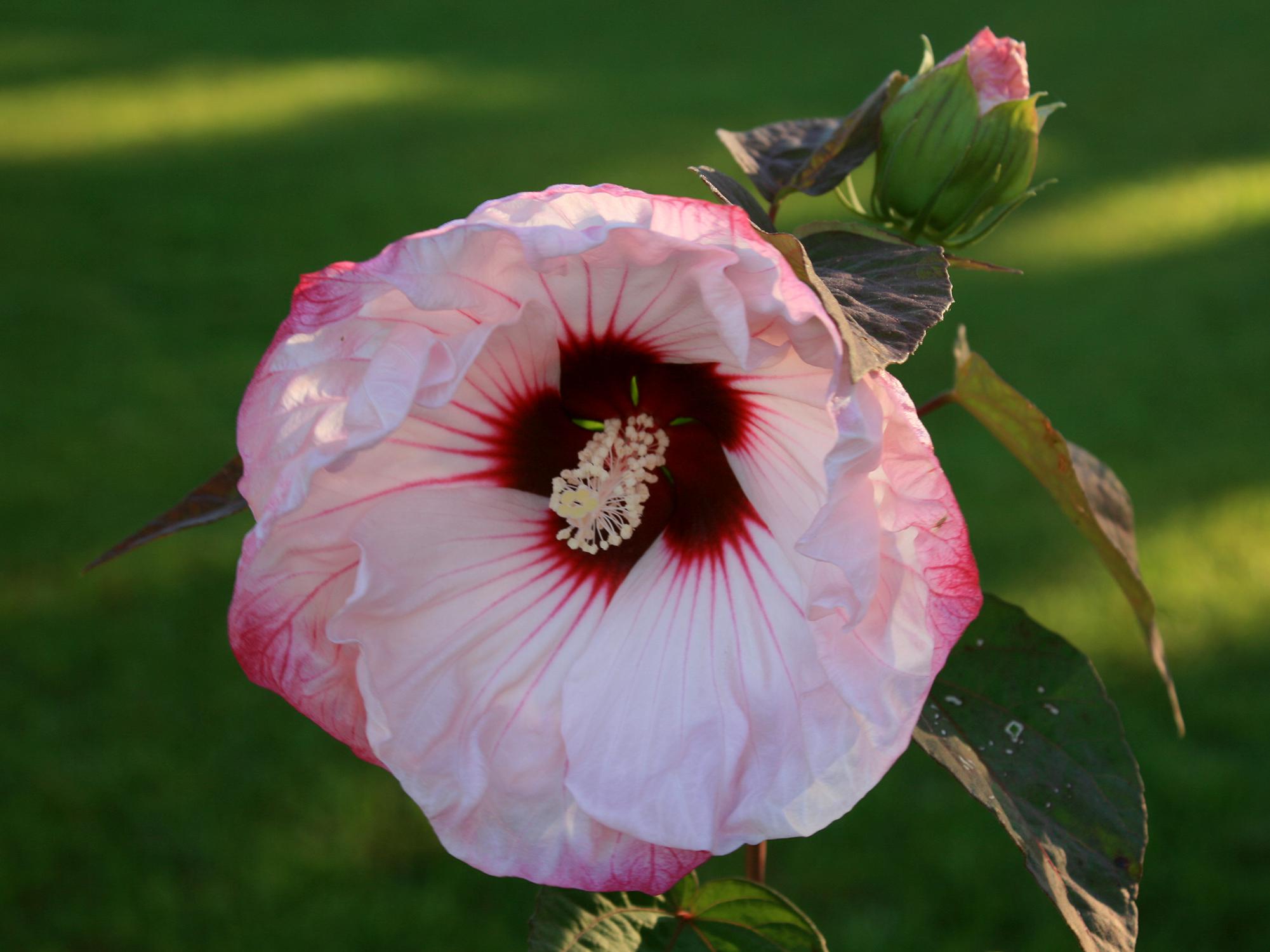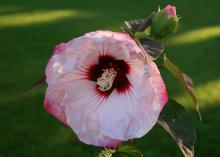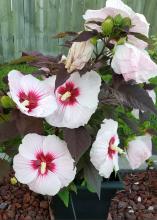Information Possibly Outdated
The information presented on this page was originally released on June 3, 2019. It may not be outdated, but please search our site for more current information. If you plan to quote or reference this information in a publication, please check with the Extension specialist or author before proceeding.
Hardy hibiscus offer many massive blooms
Week three of the Southern Gardening tour of hibiscus brings the spotlight on the hardy hibiscus. This easy-to-grow ornamental is largely unknown to many home gardeners, but with the impact they can have in any landscape, I think every garden should have at least one hardy hibiscus.
The fact that home gardens don’t use a lot of hardy hibiscuses may stem from the fact that these perennial plants are among the last to emerge in the spring. Even Butterfly bush, which is a late-spring grower, wakes up before hardy hibiscus.
Here’s an example of how late that is. I’d been growing these plants in my home landscape for about five years, and I almost was convinced that my first hardy hibiscus, Summerific Cherry Cheesecake, didn’t survive the winter. What else could I think when there were still dry, dead-looking sticks on May 1? But I pruned and repotted the plant, and to my surprise, I started seeing new shoots pushing out around May 15.
The plant has a vigorous growth rate that more than makes up for the late start. This year, with the milder winter, my plant woke up about May 1.
Hardy hibiscus is very different from last week’s Cajun hibiscus. These plants are extremely winter hardy, and the foliage is not as glossy. But a trait the two varieties certainly share are the bright, beautiful and gaudy flowers.
Hardy hibiscus adds value to our summer landscapes by displaying these enormous flowers. And when I say huge, I mean the flowers of hardy hibiscus are sometimes up to 12 inches across. In fact, they are often called dinner plate hibiscus.
Hardy hibiscuses are bushy plants ranging from 2 to 5 feet tall, depending on the selection. Foliage colors range from light to medium green, with some selections even offering my favorite -- burgundy and dark purple leaves. There so many available in the nursery trade. Look for Summerific, Luna and the older Disco Belle series.
Summerific Cherry Cheesecake was my first hardy hibiscus, and it still is a star in my garden. The flowers are gorgeous, with 7- to 8-inch-diameter flowers that can be confusing as to whether they are white or pink, with the ruffled petals having light-pink-tipped edges with pinkish veining radiating from the magenta eye.
Another favorite selection is Summerific Perfect Storm. Its combination of flower and foliage colors are as dramatic as a summer thunderstorm. This is a compact selection that is happy growing in a five-gallon container.
Perfect Storm flowers are huge; I’ve measured some at over 9 inches in diameter. And the number of flowers is also huge. My Perfect Storm has had more than 30 flower buds at one time. The flowers -- white with a red eye -- are displayed above the maple-like foliage of deep maroon-purple.
Hibiscuses love the sun and need moist, well-drained soil. These conditions will result in larger flowers and lush foliage. In spring, cut back any remaining stems before new growth appears. I typically cut back hard to about 6 inches in the spring any time before the new growth starts to appear.
So, if you’re ready to feast on a dinner plate full of gaudy color, look at some of the different varieties of hardy hibiscus.




